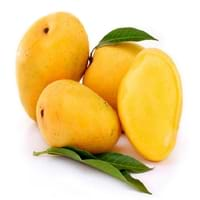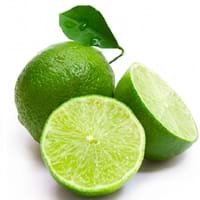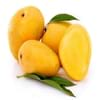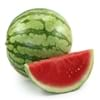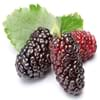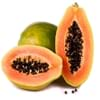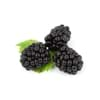Health Benefits
Cancer prevention, Cures fatigue, Heart care, Prevents strokes
Arthritis treatment, Cholera treatment, Gout treatment, Heart care, Piles treatment, Scurvy treatment
General Benefits
Anti oxidant properties, Boosts immune system, Controls blood pressure, Digestive aid, Improves eye vision, Maintains healthy cholesterol level
Cures fever, Digestive aid, Eye care, Maintains healthy cholesterol level, Treatment of common cold
Skin Benefits
Anti-aging benefits, Brightens and lightens complexion, Skin cleansing, Skin rejuvenation, Treatment of acne, Treatment of blackheads, Treatment of dark spots
Anti-aging benefits, Skin rejuvenation, Treatment of acne, Treatment of dark spots
Hair Benefits
Good conditioner, Prevents hair loss, Treatment of dandruff
Promotes longer and healthier hair, Treatment of dandruff
Allergy Symptoms
Abdominal pains, Breathing difficulty, Diarrhea, Runny nose, Sneezing, Swelling of mouth, tongue or lips, Watery eyes
Breathing difficulty, Coughing, Eye irritation, Hives, Inflammation, Nasal congestion, Runny nose, Skin rash, Wheezing
Side Effects
Increase in blood sugar level, Diarrhoea, Weight gain
Chances of sunburn
Best Time to Eat
Don't consume at night and before bed, Eat the fresh ones, avoid mixing with any other foods, don't eat after meal., Morning time (before lunch)
Along with meal, Best to drink warm water with lime on an empty stomach, Don't consume at night and before bed
Vitamin B5 (Pantothenic Acid)
Vitamin C (Ascorbic Acid)
Vitamin K (Phyllochinone)
Calories in Fresh Fruit with Peel
Not Available
Not Available
Calories in Fresh Fruit without Peel
Calories in Frozen Form
Not Available
Calories in Dried Form
Not Available
Type
Tree fruit
Citrus, Tree fruit
Season
Spring, Summer
All seasons
Varieties
Alphonso, Valencia Pride, Badami, Chaunsa, Nam Dok Mai, Glenn, Sindhri, Madame Francique, Kesar and Keitt
Key lime, Persian lime, Kaffir lime, Desert lime, Palestine Sweet Lime, Mexican Sweet Lime, Mary Ellen Sweet Lime
Color
Orange, Red, Yellow
Green
Inside Color
Yellow
Light Green
Origin
Southern Asia
India
Soil Type
Clay, Loam, Sand
Clay loam, Sandy loam
Climatic Conditions
Humid, Warm to hot climate
Sunny, Warm to hot climate
Facts about
- A mango tree can bear fruits even after the age of 300 years.
- Height of a mango tree can be as high as 100 feet.
- In India, mango is known as a symbol of love. Also, a mango basket is considered as the sign of friendship.
- Lime is the called as the powerhouse of flavors.
- Fresh lime juice is so acidic that it can dissolve concrete.
- Limes are more fragrant and acidic than lemons.
- Persian limes are almost seedless and thorn less.
Other Countries
Bangladesh, Brazil, China, Indonesia, Mexico, Nigeria, Pakistan, Philippines, Thailand
Argentina, Brazil, India, Mexico
Top Importer
United States of America
United States of America
Top Exporter
Mexico
Mexico
Botanical Name
Mangifera Indica
Citrus aurantifolia
Synonym
Not Available
not available
Subkingdom
Tracheobionta
Tracheobionta
Division
Magnoliophyta
Magnoliophyta
Class
Magnoliopsida
Magnoliopsida
Order
Sapindales
Sapindales
Family
Anacardiaceae
Rutaceae
Species
M. indica
C. aurantifolia
Generic Group
Cashew
Citrus fruit
Difference Between Mango and Lime
We might think that Mango and Lime are similar with respect to nutritional value and health benefits. But the nutrient content of both fruits is different. Mango and Lime Facts such as their taste, shape, color, and size are also distinct. The difference between Mango and Lime is explained here.
The amount of calories in 100 gm of fresh Mango and Lime with peel is Not Available and Not Available and the amount of calories without peel is 60.00 kcal and 30.00 kcal respectively. Thus, Mango and Lime belong to Low Calorie Fruits and Low Calorie Fruits category.These fruits might or might not differ with respect to their scientific classification. The order of Mango and Lime is Sapindales and Sapindales respectively. Mango belongs to Anacardiaceae family and Lime belongs to Rutaceae family. Mango belongs to Mangifera genus of M. indica species and Lime belongs to Citrus genus of C. aurantifolia species. Beings plants, both fruits belong to Plantae Kingdom.
